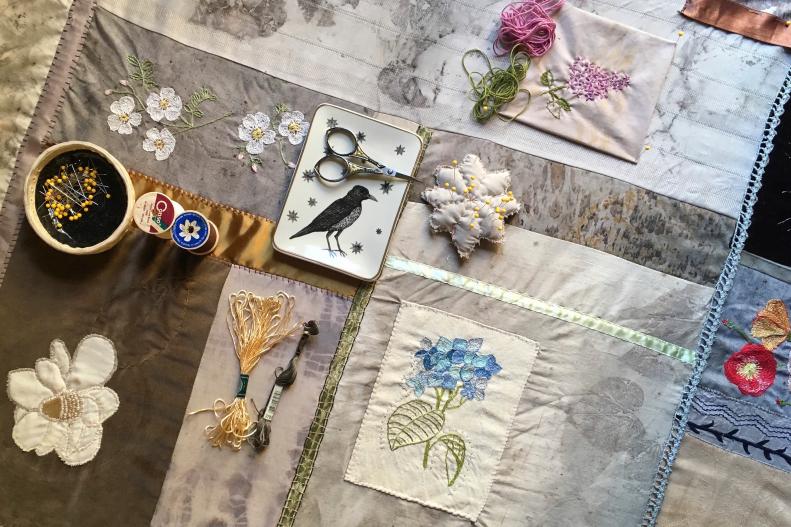Crazy Quilt
Embroidery is an age-old needlework craft. Combining traditions and techniques, stitchers set out to embellish and adorn everyday and ordinary items with ornamental designs using an array of different stitches and colors and types of thread. As mothers, grandmothers, and great-grandmothers come to mind and into hand, embroidery is rooted in tradition. Borrowing and applying methods here and there, the craft becomes an expression of self and personal style.
Two skillful artisans and visual storytellers, Tracie Noles-Ross and Lillis Taylor, both multi-tasking and dual-purposing wizards, stitch and sew art into every part of their lives, and they connect and share freely the lessons they learn along the way. In this gallery, they share their work, their inspirations, ideas and techniques.
Tracie embroiders nature stories and symbols. She crafted the quilt pictured above (called "crazy quilt") with hand-dyed fabrics repurposed materials, hand-me-down threads and inherited toolkits. "It’s a family portrait focusing on insects and plants growing around the family's home in Upstate New York. I dyed fabrics with plants that grow in their yard and that also grow in mine," Tracie explains. "It’s all about connection to natural world and place!"









